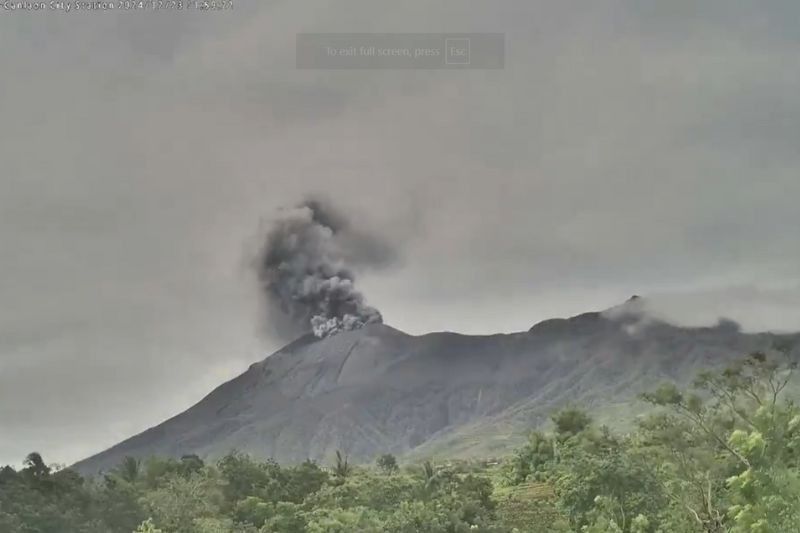Dark ash emissions observed at Kanlaon Volcano

MANILA, Philippines — Phivolcs reported on Monday, December 23, a surge in ash emissions at Kanlaon Volcano on Negros Island on top of its increased volcanic activity.
In an advisory, Phivolcs said the Kanlaon Volcano began emitting dark ash on Monday at 11:45 a.m., alongside a “weak low frequency volcanic earthquake.”
Captured by Canlaon City Station’s IP camera, the plume rose 1,200 meters above the volcano’s summit and drifted northwest.
KANLAON VOLCANO ADVISORY
— PHIVOLCS-DOST (@phivolcs_dost) December 23, 2024
23 December 2024
12:30 PM
This is a notice of increased volcanic ash emission at Kanlaon Volcano.
DOST-PHIVOLCS
Link: https://t.co/EovPsEJmW9#KanlaonVolcano pic.twitter.com/Rg2zRnbNn9
“Ash emission has been ongoing and ashfall is expected to fall over communities of Negros Occidental northwest to west of the volcano. All other parameters of the volcano remain elevated but are generally unchanged,” Phivolcs said in a statement.
Phivolcs Director Teresito Bacolcol explained in an interview with PTV News on Monday that the dark ash emission was caused by a gas-driven explosion at Kanlaon Volcano's crater, which releases volcanic materials like ash and rocks.
He added that even before Kanlaon Volcano erupted on December 9, when its status was raised to Alert Level 3 (magmatic unrest), Phivolcs had already recorded over 80 ash emissions from the volcano.
Volcanic earthquakes. On top of the emissions, the daily occurrence of volcanic earthquakes has raised concern.
Since December 18, Phivolcs has recorded a total of 92 volcanic earthquakes, or an average of around 23 per day.
Sulfur dioxide flux. Meanwhile, the sulfur dioxide emission rate on Sunday, December 22 was recorded at 7,198 tons per day, slightly lower than the 7,445 tons per day observed on December 21.
Over the past five days, sulfur dioxide emissions have consistently exceeded 4,000 tons per day.
Precaution. Bacolcol advised locals residing in nearby provinces to wear N95 or surgical masks to prevent inhalation of volcanic materials which may irritate one’s nose and throat or worsen respiratory conditions like asthma.
Under Alert Level 3, Phivolcs said that sudden explosive eruptions, laval flows, ashfalls, rockfalls and lahars brought by heavy rain are potential hazards that may occur due to Kanlaon’s activity.
People are also prohibited from entering the volcano’s six-kilometer radius.
The National Disaster Risk Reduction and Management Council (NDRRMC) reported on Monday that more than 46,000 individuals have been affected by the eruption of Kanlaon Volcano.
Nearly 15,000 people have sought temporary shelter in evacuation centers, while about 6,000 have relocated elsewhere.
The government has provided P111.422 million in assistance to over 8,000 families.
- Latest
- Trending




























